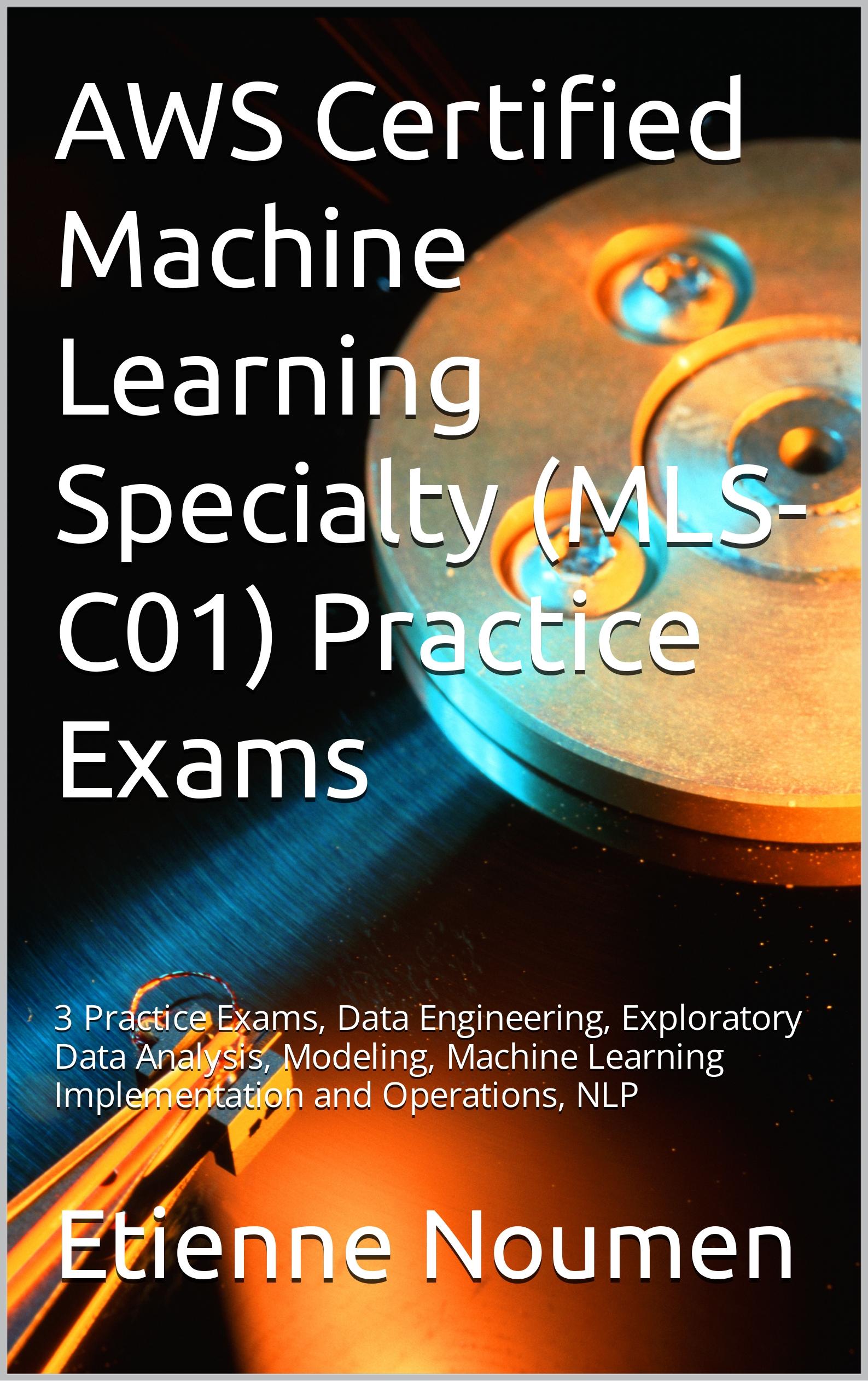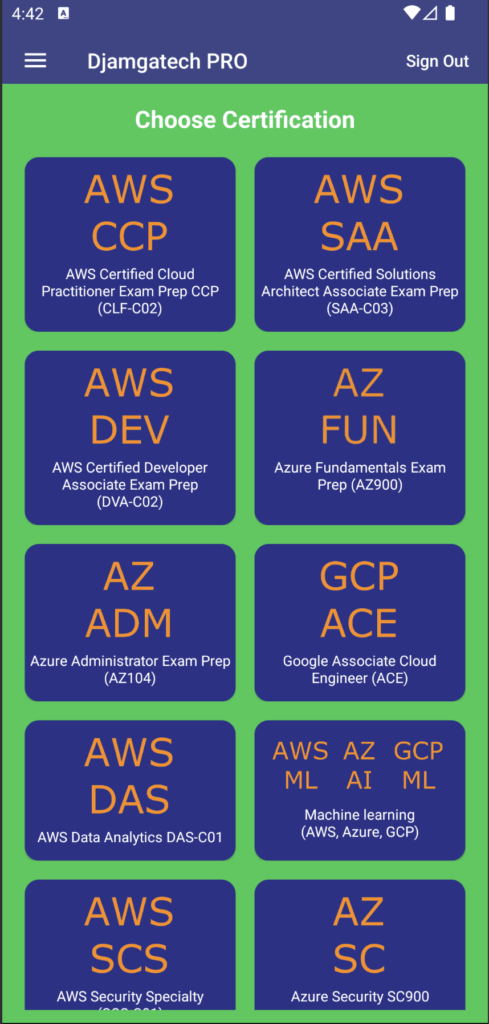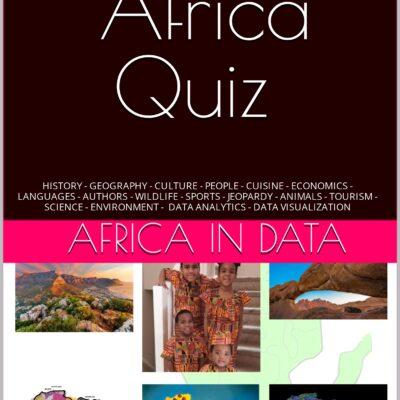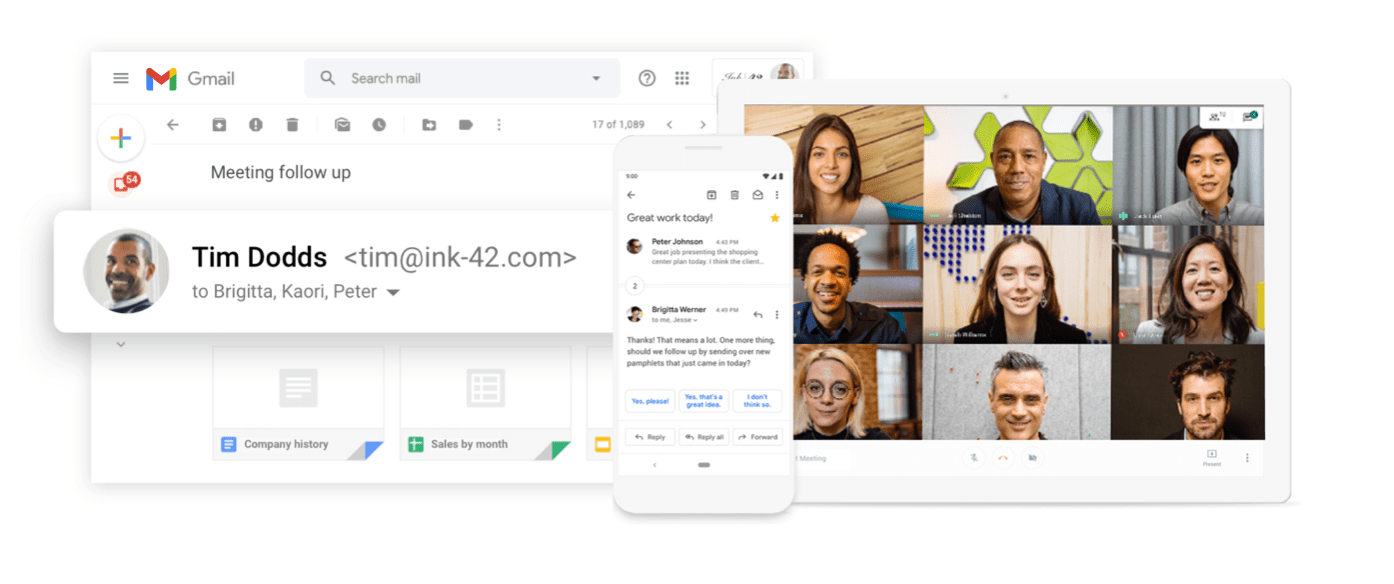Networking 101 and Top 20 AWS Certified Advanced Networking Specialty Questions and Answers Dumps
The AWS Certified Advanced Networking – Specialty (ANS-C01) examination is intended for individuals who perform complex networking tasks. This examination validates advanced technical skills and experience in designing and implementing AWS and hybrid IT network architectures at scale.

AWS ANS-C01 Exam Prep GPT


The exam covers the following domains:
Domain 1: Design and Implement Hybrid IT Network Architectures at Scale – 23%
Domain 2: Design and Implement AWS Networks – 29%
Domain 3: Automate AWS Tasks – 8%
Domain 4: Configure Network Integration with Application Services – 15%
Domain 5: Design and Implement for Security and Compliance – 12%
Domain 6: Manage, Optimize, and Troubleshoot the Network – 13%
Below are the top 20 Top 20 AWS Certified Advanced Networking – Specialty Practice Quiz including Questions and Answers and References –
Question 1: What is the relationship between private IPv4 addresses and Elastic IP addresses?
ANSWER1:
Notes/Hint1:
Reference1: IPv4 and Elastic IP
Get mobile friendly version of the quiz @ the App Store
Question 2: A company’s on-premises network has an IP address range of 11.11.0.0/16. Only IPs within this network range can be used for inter-server communication. The IP address range 11.11.253.0/24 has been allocated for the cloud. A network engineer needs to design a VPC on AWS. The servers within the VPC should be able to communicate with hosts both on the internet and on-premises through a VPN connection. Which combination of configuration steps meet these requirements? (Select TWO.)
A) Set up the VPC with an IP address range of 11.11.253.0/24.
B) Set up the VPC with an RFC 1918 private IP address range (for example, 10.10.10.0/24). Set up a NAT gateway to do translation between 10.10.10.0/24 and 11.11.253.0/24 for all outbound traffic.
C) Set up a VPN connection between a virtual private gateway and an on-premises router. Set the virtual private gateway as the default gateway for all traffic. Configure the on-premises router to forward traffic to the internet.
D) Set up a VPN connection between a virtual private gateway and an on-premises router. Set the virtual private gateway as the default gateway for traffic destined to 11.11.0.0/24. Add a VPC subnet route to point the default gateway to an internet gateway for internet traffic.
E) Set up the VPC with an RFC 1918 private IP address range (for example, 10.10.10.0/24). Set the virtual private gateway to do a source IP translation of all outbound packets to 11.11.0.0/16.
ANSWER2:
Notes/Hint2:
Reference1: CIDR block
Get mobile friendly version of the quiz @ the App Store
Question 3: Tasks running on Amazon EC2 Container Service (Amazon ECS) can use which mode for container networking (allocating an elastic networking interface to each running task, providing a dynamic private IP address and internal DNS name)?
ANSWER3:
Notes/Hint3:
Reference3: Task Networking with the awsvpc Network Mode
Get mobile friendly version of the quiz @ the App Store
Question 4: A network engineer needs to design a solution for an application running on an Amazon EC2 instance to connect to a publicly accessible Amazon RDS Multi-AZ DB instance in a different VPC and Region. Security requirements mandate that the traffic not traverse the internet. Which configuration will ensure that the instances communicate privately without routing traffic over the internet?
A) Create a peering connection between the VPCs and update the routing tables to route traffic between the VPCs. Enable DNS resolution support for the VPC peering connection. Configure the application to connect to the DNS endpoint of the DB instance.
B) Create a gateway endpoint to the DB instance. Update the routing tables in the application VPC to route traffic to the gateway endpoint.
C) Configure a transit VPC to route traffic between the VPCs privately. Configure the application to connect to the DNS endpoint of the DB instance.
D) Create a NAT gateway in the same subnet as the EC2 instances. Update the routing tables in the application VPC to route traffic through the NAT gateway to the DNS endpoint of the DB instance.
ANSWER4:
Notes/Hint4:
Reference4: DNS Resolution on the VPC Peering connection
Get mobile friendly version of the quiz @ the App Store
Question 5: Management has decided that your firm will implement an AWS hybrid architecture. Given that decision, which of the following is a petabyte-scale data transport solution that uses secure appliances to transfer large amounts of data into and out of the AWS Cloud?
ANSWER5:
Notes/Hint5:
Reference5: AWS Snowball
Get mobile friendly version of the quiz @ the App Store
Question 6: A company has implemented a critical environment on AWS. For compliance purposes, a network engineer needs to verify that the Amazon EC2 instances are using a specific approved security group and belong to a specific VPC. The configuration history of the instances should be recorded and, in the event of any compliance issues, the instances should be automatically stopped. What should be done to meet these requirements?
A) Enable AWS CloudTrail and create a custom Amazon CloudWatch alarm to perform the required checks. When the CloudWatch alarm is in a failed state, trigger the stop this instance action to stop the noncompliant EC2 instance.
B) Configure a scheduled event with AWS CloudWatch Events to invoke an AWS Lambda function to perform the required checks. In the event of a noncompliant resource, invoke another Lambda function to stop the EC2 instance.
C) Configure an event with AWS CloudWatch Events for an EC2 instance state-change notification that triggers an AWS Lambda function to perform the required checks. In the event of a noncompliant resource, invoke another Lambda function to stop the EC2 instance.
D) Enable AWS Config and create custom AWS Config rules to perform the required checks. In the event of a noncompliant resource, use a remediation action to execute an AWS Systems Manager document to stop the EC2 instance.
ANSWER6:
Notes/Hint6:
Reference6: AwS Config,
Get mobile friendly version of the quiz @ the App Store
Question 7: A previous administrator configured an inbound security group rule for port 80 (TCP) of 0.0.0.0/0 on the web server. What does this allow?
ANSWER7:
Notes/Hint7:
Reference7: Inbound Traffic
Get mobile friendly version of the quiz @ the App Store
Question 8: A company is extending its on-premises data center to AWS. Peak traffic is expected to range between 1 Gbps and 2 Gbps. A network engineer must ensure that there is sufficient bandwidth between AWS and the data center to handle peak traffic. The solution should be highly available and cost effective. What should be implemented to address these needs?
A) Deploy a 10 Gbps AWS Direct Connect connection with an IPsec VPN backup.
B) Deploy two 1 Gbps AWS Direct Connect connections in a link aggregation group.
C) Deploy two 1 Gbps AWS Direct Connect connections in a link aggregation group to two different Direct Connect locations.
D) Deploy a 10 Gbps AWS Direct Connect connection to two different Direct Connect locations.
ANSWER8:
Notes/Hint8:
Reference8: Direct Connect connections with link aggregation
Get mobile friendly version of the quiz @ the App Store
Question 9: Which of the following DNS record types is not supported by Amazon Route 53?
E) AAAA
F) SRV
ANSWER9:
Notes/Hint9:
Reference9: Route53 record types
Get mobile friendly version of the quiz @ the App Store
Question 10: A network engineer needs to limit access to the company’s Amazon S3 bucket to specific source networks. What should the network engineer do to accomplish this?
A) Create an ACL on the S3 bucket, limiting access to the CIDR blocks of the specified networks.
B) Create a bucket policy on the S3 bucket, limiting access to the CIDR blocks of the specified networks using a condition statement.
C) Create a security group allowing inbound access to the CIDR blocks of the specified networks and apply the security group to the S3 bucket.
D) Create a security group allowing inbound access to the CIDR blocks of the specified networks, create a S3 VPC endpoint, and apply the security group to the VPC endpoint.
ANSWER10:
Notes/Hint10:
Reference10: S3 Bucket Policy
Get mobile friendly version of the quiz @ the App Store
Question 11: AWS Direct Connect has two separate billable charges: port-hours and data transfer. Pricing is per port-hour consumed for each port type. How are partial port-hours handled?
ANSWER11:
Notes/Hint11:
Reference11: AWS Direct Connect billing
Get mobile friendly version of the quiz @ the App Store
Question 12: A company’s compliance requirements specify that web application logs must be collected and analyzed to identify any malicious activity. A network engineer also needs to monitor for remote attempts to change the network interface of web instances. Which services and configurations will meet these requirements?
A) Install the Amazon CloudWatch Logs agent on the web instances to collect application logs. Use VPC Flow Logs to send data to CloudWatch Logs. Use CloudWatch Logs metric filters to define the patterns to look for in the log data.
B) Configure AWS CloudTrail to log all management and data events to a custom Amazon S3 bucket and Amazon CloudWatch Logs. Use VPC Flow Logs to send data to CloudWatch Logs. Use CloudWatch Logs metric filters to define the patterns to look for in the log data.
C) Configure AWS CloudTrail to log all management events to a custom Amazon S3 bucket and Amazon CloudWatch Logs. Install the Amazon CloudWatch Logs agent on the web instances to collect application logs. Use CloudWatch Logs Insights to define the patterns to look for in the log data.
D) Enable AWS Config to record all configuration changes to the web instances. Configure AWS CloudTrail to log all management and data events to a custom Amazon S3 bucket. Use Amazon Athena to define the patterns to look for in the log data stored in Amazon S3.
ANSWER12:
Notes/Hint12:
Reference12: Amazon CloudWatch Logs insights
Get mobile friendly version of the quiz @ the App Store
Question 13: What is the maximum number of security groups that you can create for each VPC?
E) 500
F) 5
G) Unlimited
ANSWER13:
Notes/Hint13:
Reference13: Quotas
Get mobile friendly version of the quiz @ the App Store
Question 14: A company has an application that processes confidential data. The data is currently stored in an on premises data center. A network engineer is moving workloads to AWS, and needs to ensure confidentiality and integrity of the data in transit to AWS. The company has an existing AWS Direct Connect connection. Which combination of steps should the network engineer perform to set up the most cost-effective connection between the on-premises data center and AWS? (Select TWO.)
A) Attach an internet gateway to the VPC.
B) Configure a public virtual interface on the AWS Direct Connect connection.
C) Configure a private virtual interface to the virtual private gateway.
D) Set up an IPsec tunnel between the customer gateway and a software VPN on Amazon EC2.
E) Set up a Site-to-Site VPN between the customer gateway and the virtual private gateway.
ANSWER14:
Notes/Hint14:
Reference14: VPN over Direct Connect
Get mobile friendly version of the quiz @ the App Store
Question 15: A site you are helping create must use Adobe Media Server and the Adobe Real-Time Messaging Protocol (RTMP) to stream media files. When it comes to AWS, an RTMP distribution must use which of the following as the origin?
ANSWER15:
Notes/Hint15:
Reference15: S3 Bucket as origin
Get mobile friendly version of the quiz @ the App Store
Question 16: A company is creating new features for its ecommerce website. These features will be deployed as microservices using different domain names for each service. The company requires the use of HTTPS for all its public-facing websites. The application requires the client’s source IP. Which combination of actions should be taken to accomplish this? (Select TWO.)
A) Use a Network Load Balancer to distribute traffic to each service.
B) Use an Application Load Balancer to distribute traffic to each service.
C) Configure the application to retrieve client IPs using the X-Forwarded-For header.
D) Configure the application to retrieve client IPs using the X-Forwarded-Host header.
E) Configure the application to retrieve client IPs using the PROXY protocol header.
ANSWER16:
Notes/Hint16:
Reference16: Host based routing
Get mobile friendly version of the quiz @ the App Store
Question 17: What is the maximum number of connections you can have in a LAG (Link Aggregation Group)?
ANSWER17:
Notes/Hint17:
Reference17: Link Aggregation Group
Get mobile friendly version of the quiz @ the App Store
Question 18: A network engineer is architecting a high performance computing solution on AWS. The system consists of a cluster of Amazon EC2 instances that require low-latency communications between them. Which method will meet these requirements?
A) Launch instances into a single subnet with a size equal to the number of instances required for the cluster.
B) Create a cluster placement group. Launch Elastic Fabric Adapter (EFA)-enabled instances into the placement group.
C) Launch Amazon EC2 instances with the largest available number of cores and RAM. Attach Amazon EBS Provisioned IOPS (PIOPS) volumes. Implement a shared memory system across all instances in the cluster.
D) Choose an Amazon EC2 instance type that offers enhanced networking. Attach a 10 Gbps non-blocking elastic network interface to the instances.
ANSWER18:
Notes/Hint18:
Reference18: Cluster placement groups
Get mobile friendly version of the quiz @ the App Store
Question 19: What is the maximum number of security groups that can be associated with each network interface?
E) 2
ANSWER2:
Notes/Hint19:
Reference19: maximum number of security groups per network interface
Get mobile friendly version of the quiz @ the App Store
Question 20: A company’s internal security team receives a request to allow Amazon S3 access from inside the corporate network. All external traffic must be explicitly allowed through the corporate firewalls. How can the security team grant this access?
A) Schedule a script to download the Amazon S3 IP prefixes from AWS developer forum announcements. Update the firewall rules accordingly.
B) Schedule a script to download and parse the Amazon S3 IP prefixes from the ip-ranges.json file. Update the firewall rules accordingly.
C) Schedule a script to perform a DNS lookup on Amazon S3 endpoints. Update the firewall rules accordingly.
D) Connect the data center to a VPC using AWS Direct Connect. Create routes that forward traffic from the data center to an Amazon S3 VPC endpoint.
ANSWER20:
Notes/Hint20:
Reference20: ip-range.json
Get mobile friendly version of the quiz @ the App Store
SOURCES:
1- Djamga Cloud Networking Youtube Channel
2- Prepare for Your AWS Certification Exam
LATEST NETWORKING NEWS:
LATEST NETWORKING JOBS:
CLOUD NETWORKING Q&A:
HOW WIFI WORKS:
How Wi-Fi Works: From Electricity to Information
Wi-Fi is a brand name for wireless networking standards. Wi-Fi lets devices communicate by sending and receiving radio waves.
In 1971, the University of Hawaii demonstrated the first wireless data network, known as ALOHAnet. In 1985, the US FCC opened the ISM radio bands for unlicensed transmissions. After 1985, other countries followed, and more people started experimenting. In 1997 and 1999, the IEEE ratified the first international wireless networking standards. They were called 802.11-1997, 802.11b, and 802.11a. The technology was amazing, but the names were not.
In 1999, the brand-consulting firm Interbrand created the logo and suggested Wi-Fi as the name. Wi-Fi was a pun on hi-fi, referring to high-fidelity audio. Wi-Fi was easier to remember than 802.11, and we’ve been stuck with the name since. The official name is Wi-Fi, but most people don’t capitalize it or include the hyphen. Wi-Fi, WiFi, Wifi, wifi, and 802.11 all refer to the same thing. In the early days, Wi-Fi was used as shorthand for Wireless Fidelity, but it isn’t officially short for anything. According to the Wi-Fi Alliance, Wi-Fi is Wi-Fi.
Wi-Fi transmits data using microwaves, which are high-frequency radio waves. Wi-Fi is more complicated than FM radio, but the basic underlying technology is the same. They both encode information into radio waves, which are received and decoded. FM radio does this for sound, Wi-Fi does this for computer data. So how can we use radio waves to send sound, or information?
At a basic level, you can think of two people holding a jump rope. One person raises and lowers their arm quickly, creating a wave. With Wi-Fi, this person would represent your Wi-Fi router, or wireless access point. Keeping the same up and down motion is known as a carrier wave. The person on the other end is the client device, such as a laptop or cell phone. When a wireless client joins the network and senses the carrier wave, it starts listening and waits for small differences in the signal.
In our example, you can imagine feeling the jump rope going up and down, and then receiving a single motion to the right. That single motion to the right can be interpreted as a binary number 1. A motion to the left would be a binary 0. Chain enough 1’s and 0’s together and you can represent complicated things, like all the data on this webpage.
It sounds like magic, but it’s not only Wi-Fi that works this way. Bluetooth, 4G, 5G, and most wireless transmissions work by manipulating waves to transfer electrical signals through the air. A deeper, better question than “How does Wi-Fi work?” is “How do wireless transmissions work?”
If you want a better answer, you need to have a basic understanding of a few things:
Fundamental physics of electricity and magnetism
Electromagnetic radiation, radio waves, and antennas
How wired networks transmit data
I tried my best to keep this understandable, and laid out in a way that makes sense. This stuff is complicated, and hard to explain. That is why there are so many bad explanations of how Wi-Fi works out there.
This isn’t going to be a light and breezy discussion. Each of these topics could be an entire college course, so forgive me for simplifying where possible. Use Wikipedia and other resources to fill in the gaps, or to clarify something I glossed over. As always, corrections and feedback are welcomed.
Let’s dive in the deep end and cover the physics first. If you’re not familiar with fundamental physics, Wikipedia is an amazing resource. The key terms highlighted in blue are links to Wikipedia articles which explain further.
Matter is made up of atoms.
A positively or negatively charged particle creates an electric field.
An electric field exerts force on other charges around it, attracting or repelling them.
Magnetic fields and electric fields are related. They are both results of the electromagnetic force, one of the four fundamental forces of nature.
Electrical current is a flow of negatively charged electrons through a conductive material, like a wire.
Electrical current flowing through a wire creates a magnetic field. This is how electromagnets work.
In 1867, James Clerk Maxwell discovered that light, magnetism, and electricity are related.
He predicted the existence of electromagnetic waves.
His equations describe how electric and magnetic fields are generated by charges, currents, and other field changes.
This is known as the 2nd great unification of physics, behind Sir Issac Newton.
In 1887, Heinrich Hertz was the first to prove the existence of electromagnetic waves. People thought that was so cool, they used his last name as the unit for a wave’s frequency.
Electromagnetic waves don’t need a medium. They can move through the vacuum of space, for example.
Since visible light is an electromagnetic wave, this is how we can see the sun, or distant stars.
This is also how we heard Neil Armstrong say “One small step for man…” live from the moon.
The warmth you feel from sunlight is due to the radiant energy sunlight contains. All electromagnetic waves have radiant energy.
Examples of electromagnetic waves: Visible light, radio waves, microwaves, infrared, ultraviolet, X-rays, and gamma rays.
Wi-Fi is an example of a radio wave, specifically a microwave. Microwaves are high-energy radio waves.
Electromagnetic waves come in a wide range of forms. The type of wave is categorized by wavelength and frequency.
Wavelength is a measure of the distance over which the wave’s shape repeats. In a typical continuous sine wave like Wi-Fi, every time a wave goes from peak to valley to peak, we call that a cycle. The distance it takes to complete one cycle is its wavelength.
Frequency is a measure of how many cycles the wave makes per second. We use Hertz (Hz) as the measure of frequency, 1 Hz is one cycle per second. The more common MHz and GHz are for millions, or billions, of cycles per second.
Imagine waves on a beach. On calm days the waves are small, and come in slowly. On a windy day the waves have more energy, come in faster, and have less distance between them. Higher energy, higher frequency, shorter wavelength. Unlike ocean waves, electromagnetic waves move at the speed of light. Since their speed is constant, their wavelength and frequency are inverse. As wavelength goes up, frequency does down. If you multiply the wavelength and frequency, you will always get the same value — the speed of light, the speed limit of the universe.
You can graph all the various kinds of electromagnetic waves, with the lowest energy on the left, and the highest energy on the right. We call this the electromagnetic spectrum. I’m not going to cover the entire electromagnetic spectrum, since we are mainly interested in Wi-Fi’s microwaves, and how we can use them to send data wirelessly.
Starting from the left, we have the low-energy waves we call radio. Opinions vary, but I’m going with Wikipedia’s broad definition that radio waves cover from 30 Hz, up to 300 GHz. Compared to the rest of the spectrum, radio’s wavelengths are long, their frequency is slow, and energy is low. Within radio waves, there is a separate category we call microwaves.
Microwaves fall within the broader radio wave range. At a minimum, microwaves cover 3 GHz to 30 GHz, but some people say microwaves extend further than that. The specific range depends on who you ask, but generally you can think of Microwaves as high-frequency radio waves.
Microwaves are used in microwave ovens, Bluetooth, Wi-Fi, your cell phone’s 4G or 5G connection, and lots of other wireless data transmissions. Their higher energy, shorter wavelength, and other properties make them better for high-bandwidth transfers than traditional, lower-powered radio waves.
All waves can be modulated by varying either the amplitude (strength), frequency or phase of the wave. This is what allows Wi-Fi, and any other wireless technology, to encode data in a wireless signal.
Before we cover how wireless data transmission works, we need to understand how wired data transmission works. In wired Ethernet networks, we use the copper inside Ethernet cables to transmit electrical signals. The conductive copper transfers the electrical current applied at one end, through the wire, to the other side.
A typical example would be a PC plugged into an Ethernet switch. If the PC wants to transfer information, it converts binary digits to electrical impulses. On, off, on, off. It sends a specific pattern of 1’s and 0’s across the wire, which is received on the other end. Ethernet is the neighborhood street of the networking world. It’s great for getting around the local area, but you’ll need to jump on the highway if you want to go further.
The highway of the networking world is fiber optic cabling. Just like how Ethernet transfers electrical current, we can do the same thing with lasers and fiber optic cables. Fiber optic cables are made of bendable glass, and they provide a path for light to be transmitted. Since fiber optics require lasers, special transceivers are required at each end. Compared to Ethernet, Fiber optic cables have the advantage of having a longer range, and generally a higher capacity.
Fiber optic cabling carries a big portion of global Internet traffic. We have a wide array of fiber optic cabling over land, and sea. Those connections are what allow you to communicate with someone on the other side of the country, or the other side of the world. This is possible because these transmissions happen at the speed of light.
Here’s where things get fun. Just like how Ethernet and fiber optic cabling take an electrical impulse or beam of light from A to B, we can do the same thing with radios, antennas, and radio waves.
Now that we have a rough common understanding of electromagnetic waves and wired data transmission, how can we transmit data wirelessly? The key is an antenna. Antennas convert electricity into radio waves, and radio waves into electricity. A basic antenna consists of two metal rods connected to a receiver or transmitter.
When transmitting, a radio supplies an alternating electric current to the antenna, and the antenna radiates the energy as electromagnetic waves. When receiving, an antenna reverses this process. It intercepts some of the power of a radio wave to produce an electrical current, which is applied to a receiver, and amplified. Receiving antennas capture a fraction of the original signal, which is why distance, antenna design, and amplification are important for a successful wireless transmission.
If you have a properly tuned, powerful antenna, you can send a signal 1000s of kilometers away, or even into space. It’s not just Wi-Fi, this is what makes satellites, radar, radio, and broadcast TV transmissions work too. Pretty cool, right?
An intricate pattern of electrons representing computer data flow into your Wi-Fi router, or wireless access point.
The access point sends that pattern of electrons to an antenna, generating an electromagnetic wave.
By alternating between a positive to negative charge, the wire inside of an antenna creates an oscillating electric and magnetic field. These oscillating fields propagate out into space as electromagnetic waves, and are able to be received by anyone in range.
Typical Wi-Fi access points have omnidirectional antennas, which make the wave propagate in all horizontal directions.
This wave travels through the air and hits a receiving antenna which reverses the process, converting the radiant energy in the radio wave back into electricity.
The electric field of the incoming wave pushes electrons back and forth in the antenna, creating an alternating positive and negative charge. The oscillating field induces voltage and current, which flows to the receiver.
The signal is amplified and received, either to the client device or to an Ethernet connection for further routing.
A lot of the wave’s energy is lost along the way.
If the transmission was successful, the electrical impulses should be a good copy of what was sent.
If the transmission wasn’t successful, the data is resent.
When the information is received on the other end, it is treated the same as any other data on the network.
Wi-Fi has redundancy built-in. If you wanted to send “Hello” your access point wouldn’t send an H, an E, an L, an L and a O. It sends multiple characters for each one, just like you would on a static-filled radio or phone call. It will use its equivalent of the phonetic alphabet to send “Hotel”, “Echo”, “Lima”, “Lima”, “Oscar”.
That way, even if you didn’t hear the entire transmission, you are still likely to be able to know that “Hello” was being sent. The level of redundancy varies on signal strength and interference on the channel.
If the signal strength is high, the access point and receiver are able to use a complicated modulation scheme, and encode a lot of data.
If you think about our jump rope analogy from earlier, rather than just left and right, it can divide into 1/4s, 1/8ths, or further. It can also combine the direction of the modulation with strength, or phase of modulation.
The most complex modulation in Wi-Fi 6 is 1024-QAM, which has 1024 unique combinations of amplitude and phase. This results in high throughput, but requires a very strong wireless signal and minimal interference to work effectively.
As your wireless signal weakens, complex modulation can’t be understood. Both devices will step down to a less complex modulation scheme. This is why Wi-Fi slows down as you move away from the access point.
I plan on writing a whole series of posts about Wi-Fi fundamentals which will cover various topics about Wi-Fi, how to improve your home network, and related issues. If there is something you want me to cover, leave a comment below.
The IEEE, an international standards body, sets the definitions of what Wi-Fi is. They’re the reason we have Wi-Fi standards with names like 802.11n, 802.11ac or 802.11ax. They’ve since renamed the major standards to Wi-Fi 1, 2, 3, 4, 5, and 6. With each generation, Wi-Fi gets better, and there are a lot of details to cover. I’ll cover that in a future post.
Hertz did not realize the practical importance of his experiments. “It’s of no use whatsoever. This is just an experiment that proves Maestro Maxwell was right—we just have these mysterious electromagnetic waves that we cannot see with the naked eye. But they are there.” When asked about the applications of his discoveries, Hertz replied, “Nothing, I guess.”You can pay your respects to this legend by always capitalizing the H in MHz and GHz.
It takes about one second for a radio wave to travel from the Earth to the moon. It’s pretty amazing that over 50 years ago we had the technology to capture sound and images on the moon, turn them into electromagnetic waves, beam them back to Earth, and transmit them around the globe. I guess it’s pretty cool we put a human on the moon, too.
If you keep adding energy to microwaves, you can end up in a unique part of the EM spectrum, visible light. Visible light’s wavelengths are measured in nanometers, and nanometers are really small: a human hair is around 75,000 nanometers wide. Visible light has a wavelength between 380 and 740 nanometers and a frequency between 405 and 790 THz (trillions of cycles per second). It’s hard to wrap your head around, but a lot of foundational physics is, too.
Your eye is reading this page because your computer screen is sending out electromagnetic radiation in the visible light portion of the electromagnetic spectrum. Differences in the wavelength cause your eye to interpret different areas of the page as different colors. A whole lot of brain magic and pattern recognition lets you interpret those color variations as letters and words. If I did my job as a writer, there should also be some meaning behind those words. All from some waves shooting out of your screen. Physics is amazing, Wi-Fi isn’t magic, and writing is telepathy.
Source: Reddit
LONGEST NETWORK CONNECTION IN THE UNIVERSE
Testimonials: I Passed the AWS Certified Advanced Networking Specialty
Passed the AWS Certified Advanced Networking Specialty Exam ANS-C01 2022
I recently passed the AWS Certified Advanced Networking Specialty ANS-C01 exam. I have passed the SysOps and SAA certifications before taking the ANS-C01 exam in the past, but man, this test really is challenging. The scenarios are in multiple paragraph form ( 2 or 3 paragraphs for the scenario) and the options are seemingly valid with a slight difference.
For my exam prep, I recommend using the AWS Skill Builder digital course for fast study of the core networking concepts and then take the Tutorials Dojo mock exams for validation. Read all the explanation and retake the mock exams until you feel confident on the topics. Also focus on some Kubernetes Pod Networking in EKS, Transit Gateway, Direct Connect Gateways, AWS Network Firewall and GuardDuty.
Exam Prep Resources I used:
TD practice exams: (contains relevant scenarios and super detailed explanations) https://portal.tutorialsdojo.com/courses/aws-certified-advanced-networking-specialty-practice-exams/
Skill Builder Courses: https://explore.skillbuilder.aws/learn/course/external/view/elearning/109/exam-readiness-aws-certified-advanced-networking-specialty-digital
Also read the official exam guide so you know the list of services to focus on. The list of task statements is a gold mine of information. Also read the list of common exam scenarios on TD cheatsheets for final review:
Advanced ANS-C01 Topics I encountered:
MacSec
“Appliance” mode for Transit Gateway
Amazon EKS with Horizonal Pod Scaler
Multicast for Transit Gateway
For those who are about to take this exam, I recommend studying seriously for this test. You must really study and know the features of each AWS networking services. Also read up on other success posts in this subreddit, like this one:
Passed AWS Certified advanced networking – Specialty ANS-C01 2 days ago
This was a tough exam.
Here’s what I used to get prepped:
Exam guide book by Kam Agahian and group of authors – this just got released and has all you need in a concise manual, it also included 3 practice exams, this is a must buy for future reference and covers ALL current exam topics including container networking, SD-WAN etc.
Stephane Maarek’s Udemy course – it is mostly up-to-date with the main exam topics including TGW, network firewall etc. To the point lectures with lots of hands-on demos which gives you just what you need, highly recommended as well!
Tutorial Dojos practice tests to drive it home – this helped me get an idea of the question wording, so I could train myself to read fast, pick out key words, compare similar answers and build confidence in my knowledge.
Crammed daily for 4 weeks (after work, I have a full time job + family) and went in and nailed it. I do have networking background (15+ years) and I am currently working as a cloud security engineer and I’m working with AWS daily, especially EKS, TGW, GWLB etc.
For those not from a networking background – it would definitely take longer to prep.
Good luck!
Active Hydrating Toner, Anti-Aging Replenishing Advanced Face Moisturizer, with Vitamins A, C, E & Natural Botanicals to Promote Skin Balance & Collagen Production, 6.7 Fl Oz


Age Defying 0.3% Retinol Serum, Anti-Aging Dark Spot Remover for Face, Fine Lines & Wrinkle Pore Minimizer, with Vitamin E & Natural Botanicals


Firming Moisturizer, Advanced Hydrating Facial Replenishing Cream, with Hyaluronic Acid, Resveratrol & Natural Botanicals to Restore Skin's Strength, Radiance, and Resilience, 1.75 Oz

Skin Stem Cell Serum


Smartphone 101 - Pick a smartphone for me - android or iOS - Apple iPhone or Samsung Galaxy or Huawei or Xaomi or Google Pixel
Can AI Really Predict Lottery Results? We Asked an Expert.

Djamgatech

Read Photos and PDFs Aloud for me iOS
Read Photos and PDFs Aloud for me android
Read Photos and PDFs Aloud For me Windows 10/11
Read Photos and PDFs Aloud For Amazon
Get 20% off Google Workspace (Google Meet) Business Plan (AMERICAS): M9HNXHX3WC9H7YE (Email us for more)
Get 20% off Google Google Workspace (Google Meet) Standard Plan with the following codes: 96DRHDRA9J7GTN6(Email us for more)
FREE 10000+ Quiz Trivia and and Brain Teasers for All Topics including Cloud Computing, General Knowledge, History, Television, Music, Art, Science, Movies, Films, US History, Soccer Football, World Cup, Data Science, Machine Learning, Geography, etc....

List of Freely available programming books - What is the single most influential book every Programmers should read
- Bjarne Stroustrup - The C++ Programming Language
- Brian W. Kernighan, Rob Pike - The Practice of Programming
- Donald Knuth - The Art of Computer Programming
- Ellen Ullman - Close to the Machine
- Ellis Horowitz - Fundamentals of Computer Algorithms
- Eric Raymond - The Art of Unix Programming
- Gerald M. Weinberg - The Psychology of Computer Programming
- James Gosling - The Java Programming Language
- Joel Spolsky - The Best Software Writing I
- Keith Curtis - After the Software Wars
- Richard M. Stallman - Free Software, Free Society
- Richard P. Gabriel - Patterns of Software
- Richard P. Gabriel - Innovation Happens Elsewhere
- Code Complete (2nd edition) by Steve McConnell
- The Pragmatic Programmer
- Structure and Interpretation of Computer Programs
- The C Programming Language by Kernighan and Ritchie
- Introduction to Algorithms by Cormen, Leiserson, Rivest & Stein
- Design Patterns by the Gang of Four
- Refactoring: Improving the Design of Existing Code
- The Mythical Man Month
- The Art of Computer Programming by Donald Knuth
- Compilers: Principles, Techniques and Tools by Alfred V. Aho, Ravi Sethi and Jeffrey D. Ullman
- Gödel, Escher, Bach by Douglas Hofstadter
- Clean Code: A Handbook of Agile Software Craftsmanship by Robert C. Martin
- Effective C++
- More Effective C++
- CODE by Charles Petzold
- Programming Pearls by Jon Bentley
- Working Effectively with Legacy Code by Michael C. Feathers
- Peopleware by Demarco and Lister
- Coders at Work by Peter Seibel
- Surely You're Joking, Mr. Feynman!
- Effective Java 2nd edition
- Patterns of Enterprise Application Architecture by Martin Fowler
- The Little Schemer
- The Seasoned Schemer
- Why's (Poignant) Guide to Ruby
- The Inmates Are Running The Asylum: Why High Tech Products Drive Us Crazy and How to Restore the Sanity
- The Art of Unix Programming
- Test-Driven Development: By Example by Kent Beck
- Practices of an Agile Developer
- Don't Make Me Think
- Agile Software Development, Principles, Patterns, and Practices by Robert C. Martin
- Domain Driven Designs by Eric Evans
- The Design of Everyday Things by Donald Norman
- Modern C++ Design by Andrei Alexandrescu
- Best Software Writing I by Joel Spolsky
- The Practice of Programming by Kernighan and Pike
- Pragmatic Thinking and Learning: Refactor Your Wetware by Andy Hunt
- Software Estimation: Demystifying the Black Art by Steve McConnel
- The Passionate Programmer (My Job Went To India) by Chad Fowler
- Hackers: Heroes of the Computer Revolution
- Algorithms + Data Structures = Programs
- Writing Solid Code
- JavaScript - The Good Parts
- Getting Real by 37 Signals
- Foundations of Programming by Karl Seguin
- Computer Graphics: Principles and Practice in C (2nd Edition)
- Thinking in Java by Bruce Eckel
- The Elements of Computing Systems
- Refactoring to Patterns by Joshua Kerievsky
- Modern Operating Systems by Andrew S. Tanenbaum
- The Annotated Turing
- Things That Make Us Smart by Donald Norman
- The Timeless Way of Building by Christopher Alexander
- The Deadline: A Novel About Project Management by Tom DeMarco
- The C++ Programming Language (3rd edition) by Stroustrup
- Patterns of Enterprise Application Architecture
- Computer Systems - A Programmer's Perspective
- Agile Principles, Patterns, and Practices in C# by Robert C. Martin
- Growing Object-Oriented Software, Guided by Tests
- Framework Design Guidelines by Brad Abrams
- Object Thinking by Dr. David West
- Advanced Programming in the UNIX Environment by W. Richard Stevens
- Hackers and Painters: Big Ideas from the Computer Age
- The Soul of a New Machine by Tracy Kidder
- CLR via C# by Jeffrey Richter
- The Timeless Way of Building by Christopher Alexander
- Design Patterns in C# by Steve Metsker
- Alice in Wonderland by Lewis Carol
- Zen and the Art of Motorcycle Maintenance by Robert M. Pirsig
- About Face - The Essentials of Interaction Design
- Here Comes Everybody: The Power of Organizing Without Organizations by Clay Shirky
- The Tao of Programming
- Computational Beauty of Nature
- Writing Solid Code by Steve Maguire
- Philip and Alex's Guide to Web Publishing
- Object-Oriented Analysis and Design with Applications by Grady Booch
- Effective Java by Joshua Bloch
- Computability by N. J. Cutland
- Masterminds of Programming
- The Tao Te Ching
- The Productive Programmer
- The Art of Deception by Kevin Mitnick
- The Career Programmer: Guerilla Tactics for an Imperfect World by Christopher Duncan
- Paradigms of Artificial Intelligence Programming: Case studies in Common Lisp
- Masters of Doom
- Pragmatic Unit Testing in C# with NUnit by Andy Hunt and Dave Thomas with Matt Hargett
- How To Solve It by George Polya
- The Alchemist by Paulo Coelho
- Smalltalk-80: The Language and its Implementation
- Writing Secure Code (2nd Edition) by Michael Howard
- Introduction to Functional Programming by Philip Wadler and Richard Bird
- No Bugs! by David Thielen
- Rework by Jason Freid and DHH
- JUnit in Action
#BlackOwned #BlackEntrepreneurs #BlackBuniness #AWSCertified #AWSCloudPractitioner #AWSCertification #AWSCLFC02 #CloudComputing #AWSStudyGuide #AWSTraining #AWSCareer #AWSExamPrep #AWSCommunity #AWSEducation #AWSBasics #AWSCertified #AWSMachineLearning #AWSCertification #AWSSpecialty #MachineLearning #AWSStudyGuide #CloudComputing #DataScience #AWSCertified #AWSSolutionsArchitect #AWSArchitectAssociate #AWSCertification #AWSStudyGuide #CloudComputing #AWSArchitecture #AWSTraining #AWSCareer #AWSExamPrep #AWSCommunity #AWSEducation #AzureFundamentals #AZ900 #MicrosoftAzure #ITCertification #CertificationPrep #StudyMaterials #TechLearning #MicrosoftCertified #AzureCertification #TechBooks
Top 1000 Canada Quiz and trivia: CANADA CITIZENSHIP TEST- HISTORY - GEOGRAPHY - GOVERNMENT- CULTURE - PEOPLE - LANGUAGES - TRAVEL - WILDLIFE - HOCKEY - TOURISM - SCENERIES - ARTS - DATA VISUALIZATION

Top 1000 Africa Quiz and trivia: HISTORY - GEOGRAPHY - WILDLIFE - CULTURE - PEOPLE - LANGUAGES - TRAVEL - TOURISM - SCENERIES - ARTS - DATA VISUALIZATION

Exploring the Pros and Cons of Visiting All Provinces and Territories in Canada.

Exploring the Advantages and Disadvantages of Visiting All 50 States in the USA

Health Health, a science-based community to discuss health news and the coronavirus (COVID-19) pandemic
- The pull-out method: Why this common contraceptive fails to deliverby /u/Kampala_Dispatch on July 26, 2024 at 7:51 pm
submitted by /u/Kampala_Dispatch [link] [comments]
- Health Canada data reveals surprising number of adverse cannabis reactions (spoiler: it's small)by /u/carajuana_readit on July 26, 2024 at 5:49 pm
submitted by /u/carajuana_readit [link] [comments]
- Online portals deliver scary health news before doctors can weigh inby /u/washingtonpost on July 26, 2024 at 4:37 pm
submitted by /u/washingtonpost [link] [comments]
- Vaccine 'sharply cuts risk of dementia' new study findsby /u/SubstantialSnow7114 on July 26, 2024 at 1:53 pm
submitted by /u/SubstantialSnow7114 [link] [comments]
- Calls to limit sexual partners as mpox makes a resurgence in Australiaby /u/boppinmule on July 26, 2024 at 12:31 pm
submitted by /u/boppinmule [link] [comments]
Today I Learned (TIL) You learn something new every day; what did you learn today? Submit interesting and specific facts about something that you just found out here.
- TIL that in Thailand, if your spouse cheats on you, you can legally sue their lover for damages and can receive up to 5,000,000 THB ($140,000 USD) or more under Section 1523 of the Thai Civil and Commercial Codeby /u/Mavrokordato on July 26, 2024 at 6:57 pm
submitted by /u/Mavrokordato [link] [comments]
- TIL that with a population of 170 million people, Bangladesh is the most populous country to have never won a medal at the Olympic Games.by /u/Blackraven2007 on July 26, 2024 at 6:49 pm
submitted by /u/Blackraven2007 [link] [comments]
- TIL a psychologist got himself admitted to a mental hospital by claiming he heard the words "empty", "hollow" and "thud" in his head. Then, it took him two months to convince them he was sane, after agreeing he was insane and accepting medication.by /u/Hadeverse-050 on July 26, 2024 at 6:44 pm
submitted by /u/Hadeverse-050 [link] [comments]
- TIL Senator John Edwards of NC, USA cheated on his wife and had a child with another woman. He tried to deny it but eventually caved and admitted his mistake. He used campaign funds and was indicted by a grand jury. His life story inspired the show "The Good Wife" by Robert & Michelle Kingby /u/AdvisorPast637 on July 26, 2024 at 6:09 pm
submitted by /u/AdvisorPast637 [link] [comments]
- TIL Zhang Shuhong was a Chinese businessman who committed suicide after toys made at his factory for Fisher-Price (a division of Mattel) were found to contain lead paintby /u/Hopeful-Candle-4884 on July 26, 2024 at 4:43 pm
submitted by /u/Hopeful-Candle-4884 [link] [comments]
Reddit Science This community is a place to share and discuss new scientific research. Read about the latest advances in astronomy, biology, medicine, physics, social science, and more. Find and submit new publications and popular science coverage of current research.
- Human decision makers who possess the authority to override ML predictions may impede the self-correction of discriminatory models and even induce initially unbiased models to become discriminatory with timeby /u/f1u82ypd on July 26, 2024 at 6:29 pm
submitted by /u/f1u82ypd [link] [comments]
- Study uses Game of Thrones (GOT) to advance understanding of face blindness: Psychologists have used the TV series GOT to understand how the brain enables us to recognise faces. Their findings provide new insights into prosopagnosia or face blindness, a condition that impairs facial recognition.by /u/AnnaMouse247 on July 26, 2024 at 5:14 pm
submitted by /u/AnnaMouse247 [link] [comments]
- Specific genes may be related to the trajectory of recovery for stroke survivors, study finds. Researchers say genetic variants were strongly associated with depression, PTSD and cognitive health outcomes. Findings may provide useful insights for developing targeted therapies.by /u/AnnaMouse247 on July 26, 2024 at 5:08 pm
submitted by /u/AnnaMouse247 [link] [comments]
- New experimental drug shows promise in clearing HIV from brain: originally developed to treat cancer, study finds that by targeting infected cells in the brain, drug may clear virus from hidden areas that have been a major challenge in HIV treatment.by /u/AnnaMouse247 on July 26, 2024 at 4:57 pm
submitted by /u/AnnaMouse247 [link] [comments]
- Rapid diagnosis sepsis tests could decrease result wait times from days to hours, researchers report in Natureby /u/Science_News on July 26, 2024 at 3:50 pm
submitted by /u/Science_News [link] [comments]
Reddit Sports Sports News and Highlights from the NFL, NBA, NHL, MLB, MLS, and leagues around the world.
- Charles Barkley leaves door open to post-TNT job optionsby /u/PrincessBananas85 on July 26, 2024 at 8:47 pm
submitted by /u/PrincessBananas85 [link] [comments]
- Report: Nuggets sign Westbrook to 2-year, $6.8M dealby /u/Oldtimer_2 on July 26, 2024 at 8:13 pm
submitted by /u/Oldtimer_2 [link] [comments]
- Dolphins signing Tua to 4-year, $212.4M extensionby /u/Oldtimer_2 on July 26, 2024 at 8:09 pm
submitted by /u/Oldtimer_2 [link] [comments]
- Rams cornerback Derion Kendrick suffers season-ending torn ACLby /u/Oldtimer_2 on July 26, 2024 at 8:06 pm
submitted by /u/Oldtimer_2 [link] [comments]
- Hosting the Olympics has become financially untenable, economists sayby /u/toaster_strudel_ on July 26, 2024 at 7:34 pm
submitted by /u/toaster_strudel_ [link] [comments]

















 96DRHDRA9J7GTN6
96DRHDRA9J7GTN6